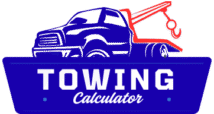Advanced Towing Calculator Spreadsheet
Towing calculator Spreadsheet
Vehicle Identification
Trailer Details
Load Details
Safety Verification
Gross Combined Weight: 0 lbs (GCWR: 0 lbs)
Payload Utilization: 0 lbs (Capacity: 0 lbs)
Trailer Weight Ratio: 0% (Max: 0 lbs)
Tongue Weight Percentage: 0% (Ideal: 10-15%)
How to Use the Towing Calculator Spreadsheet: A Step-by-Step Guide
Towing safely requires precise calculations to avoid accidents, vehicle damage, or legal issues. This advanced towing calculator spreadsheet simplifies complex measurements into an easy-to-use digital tool. Follow these steps to ensure accurate results and safe towing practices.
1. Enter Vehicle Specifications
Start with your vehicle’s official ratings, found in the owner’s manual or on the door jamb sticker:
Make/Model/Year: Identify your vehicle (e.g., “Chevrolet Silverado 2022”).
GVWR (Gross Vehicle Weight Rating): Maximum weight your vehicle can safely handle, including passengers, cargo, and fuel.
GCWR (Gross Combined Weight Rating): Total allowed weight of the vehicle + trailer + cargo.
Payload Capacity: Maximum weight your vehicle can carry (including passengers, cargo, and tongue weight).
Max Trailer Weight: Provided by the manufacturer (often listed in the towing guide).
Tip: Never guess these values—use official manufacturer data for accuracy.
2. Input Trailer Details
Gather trailer specifics, preferably from a certified scale measurement:
Trailer Weight: Total loaded weight of the trailer.
Tongue Weight: Downward force on the hitch (typically 10–15% of trailer weight).
Hitch Type: Select your hitch style:
Standard Receiver: Basic hitch for lighter loads.
Weight Distribution: For medium loads to balance weight.
Fifth Wheel/Gooseneck: For heavy-duty towing.
Note: The hitch type adjusts calculations to account for weight distribution efficiency.
3. Add Load Details
Include all additional weights inside the vehicle:
Passenger/Cargo Weight: Sum of all occupants and gear in the vehicle.
Fuel Weight: Pre-set to 150 lbs (≈22 gallons of gas). Adjust if carrying extra fuel (e.g., for long trips).
Critical Tip: Weigh cargo on a scale—estimates often undercount by 20% or more.
4. Review Safety Verification Results
The spreadsheet automatically updates calculations. Interpret results as follows:
Gross Combined Weight
What It Shows: Vehicle + trailer total weight.
Safety Check: Must not exceed GCWR. A red warning means immediate danger—reduce load.
Payload Utilization
What It Shows: Total weight on the vehicle (tongue weight + passengers + cargo).
Safety Check: Must stay below payload capacity. Yellow warnings indicate nearing limits.
Trailer Weight Ratio
What It Shows: Percentage of your trailer weight vs. the vehicle’s max capacity.
Safety Check: Stay under 100%. Values above 90% require caution.
Tongue Weight Percentage
What It Shows: Tongue weight as a percentage of trailer weight.
Safety Check: Ideal range is 10–15%. Below 10% causes swaying; above 15% strains the rear axle.
5. Follow Recommendations
The system provides tailored advice based on your inputs:
Hitch Upgrades: If trailer weight exceeds 80% of capacity with a standard hitch, switch to a weight distribution model.
Cargo Redistribution: Adjust load placement if tongue weight is outside the ideal range.
Load Reduction: Remove items if GCWR or payload limits are exceeded.
6. Save or Print Results
Use the Print Worksheet button to create a record for:
Compliance checks at weigh stations.
Insurance documentation.
Future trip planning.
Pro Tips for Reliable Results
Weigh Everything: Use truck stops or CAT scales for accurate trailer/vehicle weights.
Recheck After Modifications: Update calculations if you add cargo, passengers, or equipment.
Factor in Terrain: Mountainous routes? Manually add a 10–15% safety buffer to payload limits.
Check Tire Ratings: Ensure tires can handle the calculated weights (marked on tire sidewalls).
When to Consult a Professional
While this spreadsheet covers most scenarios, seek expert help for:
Oversized loads exceeding legal limits.
Multi-trailer setups (e.g., boat + RV).
Commercial/compliance questions.
Final Checklist Before Towing
All warnings are resolved (green statuses).
Tongue weight is 10–15%.
Trailer brakes are functional (if required).
Lights and signals are working.
By using this towing calculator spreadsheet, you protect your vehicle, cargo, and others on the road. Regularly update inputs for changing conditions, and never ignore system warnings—safety is always worth the extra minute spent verifying your setup.
